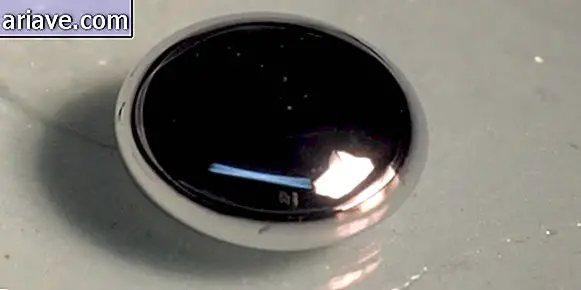Do you know how lethal injection works?
Do you know how the process of execution by lethal injection works and what substances are used to make the death of a convict happen? Below you will be able to check this information and some more details about this procedure that many support, but that also generates much controversy among human rights groups.
Lethal injection is a process used in 31 of the 50 US states that allows the death penalty, including the use of a cocktail of drugs that slowly and silently kills the perpetrator.
The idea is that there is no pain and no awareness of the damned when the lungs are paralyzed and the heart begins to stop. Some flaws have already happened in this process, but we will address this later in this article.
Death Statistics

Although there has been a reduction in the number of countries that maintain the death penalty, the United States still stands firm with this kind of punishment of criminals. According to the latest available records from the country's Department of Justice, an average of 3, 175 prisoners in 32 states and the entire federal prison system are on death row.
Since 1977, when the death penalty was reinstated at the federal level, more than 1, 200 prisoners have been executed, with 43 killed in 2012. Only China (2, 000), Iran (314), Iraq (189) and Arabia Saudi (90) executed more people last year than the United States.
How did lethal injection start?

Whether death by electrocution, hanging, shooting, gas chamber or beheading, the death penalty has always been a dirty and brutal work. For this reason, lethal injection has gained relevance as it becomes the almost exclusive method of execution in the United States because of its reputation for being a less painful and more “human” process than other methods.
The concept was originally proposed in 1888 by New York physician Julius Mount Bleyer. But his idea never came to fruition until 1977, when Oklahoma coroner Jay Chapman created the current three-drug cocktail, known as the Chapman Protocol.
This method injects an ultra fast acting barbiturate (sedative) in combination with two paralyzing substances that suppress respiratory and cardiac functions. The protocol was quickly adopted by the state of Oklahoma and soon thereafter by Texas.
In 2004, 38 of the 39 US states that maintained the death penalty were already using the Chapman Protocol. The practice has also spread to other countries, making it the most widely used method in China, Thailand, Guatemala and Taiwan.
How the procedure works
A few weeks before “day of death, ” the prisoner is interviewed by a number of prison staff, including psychiatrists, some priest or pastor, and social workers. In the days prior to the scheduled execution, the prisoner has the right of priority visits to the family, spiritual counselors and legal representation.
On the day and time of execution, he receives new clothes, is connected to a heart monitor and feeds on his last meal, then goes to the execution chamber to be placed and tied to a stretcher.
Already in its bed, the prisoner has intravenous tubes inserted in two usable veins (one additional as a safety) and the administration of a slow drip saline is initiated. Shortly after the detainee is allowed to say his last words to the witnesses sitting by the executing chamber, the responsible guardian receives the execution order and the process begins.
Deadly Cocktail
The Chapman Protocol has a trio of powerful drugs, each of which is individually lethal in its own separate dose and even more so when used together.
The process begins with the administration of five grams (14 times the recommended dose of 0.35 g) of sodium thiopentate. This fast acting barbiturate is commonly used as an anesthetic to induce comas and causes the convict to become unconscious within ten seconds on average.
Then 100 mg of pancuronium bromide is injected. This drug is a non-depolarizing muscle relaxant that blocks the action of a specific muscle receptor which in turn prevents fiber contraction. This effect paralyzes the diaphragm and lungs, stopping the condemned person's breathing.
That done, the prisoner still receives a 100 mEq (milliequivalent) injection of potassium chloride. Potassium is an electrolyte used by our bodies to help transmit electrical signals between our neurons and muscles. With this amount, the substance causes an imbalance, leading to cardiac arrest.
Once the asystole (absence of heart rhythm) records on the electrocardiogram are verified, the doctor then inspects the convict and declares the official time of death.
Crisis Process
Despite being an extremely dose-controlled process and considered the most humane of executions, the three-drug cocktail can fail. A number of studies suggest that if anesthesia was mismanaged in any procedure, prisoners could be conscious, suffering from a loss of heart and lungs.
In addition, mixing three drugs can also be difficult to administer, especially if the prisoner has severe cardiovascular degeneration.
Another problem may be the difficulty of finding an intact and easily accessible vein in the prisoner, which happened in Ohio with Rommel Broom in 2009, which survived the execution thanks to the lack of an access to inject the substances. You can check out more about this failed case of lethal injection at this other link.

As a result, the Ohio State penal system dropped the use of pancuronium bromide and potassium chloride completely and simply began administering only five grams of sodium thiopentate, yet enough to kill. Other states have also started this process.
Lack of medicine
The United States is also facing another problem that could cause further delays or blocking executions: the only company providing sodium thiopentate has moved its headquarters to Italy. And under Italian law, the company was barred from exporting the chemical to the US unless the company could prove that the substance would not be used for lethal injections, and thus the supply of sodium thiopentate in America is declining.
States that continue to use this method (complete with the three Chapman cocktail substances) have begun to use pentobarbital as an alternative. This is a synthetic anesthetic and sedative product used by veterinarians to sacrifice sick animals.
Ironically, even Dr. Chapman himself is in favor of stopping the use of his protocol. As he told CNN in 2007: "The simplest thing I know is the guillotine and I have nothing against bringing it back. The person's head is cut off and that's the end of it." And you, do you agree with him and the lethal injection or is it against the death penalty? Give your opinion.
* Originally posted on 11/07/2013.
***
Do you know the Mega Curioso newsletter? Weekly, we produce exclusive content for lovers of the biggest curiosities and bizarres of this big world! Register your email and do not miss this way to keep in touch!











